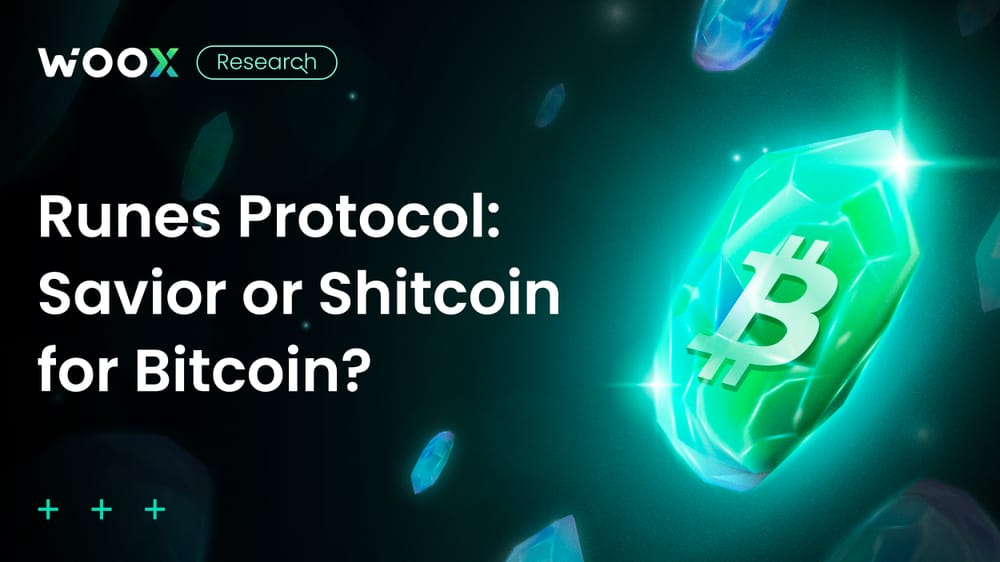Runes Protocol: Savior or Shitcoin for Bitcoin?
BTC mainnet's gas fees peaked at 152 sats per byte on June 6th, a 3.75-fold increase from last week, reflecting heightened network activity, data from GasNow show. This surge comes as Bitcoin once again breached the $70,000 mark on June 5th, fueled by the growing popularity of the Runes market.
Z•Z•Z•Z•Z•FEHU•Z•Z•Z•Z•Z (commonly referred to as Z•FEHU), the number 1 Runes, has reached a $2.89B market cap on June 6th, less than two months since its etch on April 20th.
DOG·GO·TO·THE·MOON (commonly referred to as DOG) made its way to mainstream exchanges OKX, Gate.io, and Bitget, with potential listings on Binance. Its market cap reached $878.68M.
A protocol that will potentially introduce memecoins to Bitcoin, the Runes Protocol is poised for broader impact.
Rune founder Casey Rodarmor told the Hell Money Podcast, “If Runes are successful, they’ll drain liquidity, technology, and attention away from other cryptocurrencies, and bring it back to Bitcoin.”
Simplicity is the highest virtue
The Runes protocol allows Bitcoin transactions to etch, mint, and transfer Bitcoin-native digital commodities. It enables the creation of fungible tokens, such as memecoins, on the Bitcoin network. (Detailed technical features of Runes are explained in our previous Blog “What are Runes, and which projects are notable?”)
The Runes protocol is not the first fungible token protocol for Bitcoin, but it is currently the simplest and most cost-effective one, according to Rodarmor’s blog. In a podcast, Rodarmor emphasizes that "simplicity is the highest virtue of engineering."
The Runes protocol leverages simplicity to bring numerous advantages to the Bitcoin network.
Ease of Token Creation: Runes simplifies the process of creating fungible tokens on Bitcoin. Users can generate and manage multiple tokens directly on-chain without relying on off-chain data, native tokens, or producing excessive unspent transaction outputs (UTXOs).
Resource Efficiency: Unlike the BRC-20 protocol, which causes UTXO proliferation, Runes uses the OP_RETURN model to avoid creating unspendable UTXOs. The OP_RETURN opcode consumes only 80 bytes, compared to BRC-20 inscriptions which can be as large as 4MB, making Runes a more economical option for Bitcoin's network resources.
User-Friendly Onboarding: The simplicity of Runes, coupled with the appeal of memecoins, makes user onboarding easier. This is evident in the listing of DOG·GO·TO·THE·MOON (DOG) on mainstream exchanges and the creation of numerous memecoin Runes.
These benefits contribute to increased miner revenue and expanded utility for the Bitcoin network.
“Runes are shitcoin”?
Rodarmor has been open about the nature of fungible tokens, describing them as "99.9% scams and memes" in his 2023 blog. He only brought Runes up since fungible tokens are “not going away anytime soon, just like casinos”.
This year, he reiterated his stance, calling Runes "shitcoins" and a form of "degenerate gambling" in his podcast, cautioning people against heavy investment due to the high risk of losing everything quickly.
Apart from market risks and scam projects, there are also some technical concerns about the Runes protocol.
Scalability and Security: The Runes protocol aims to minimize blockchain bloat through efficient data storage. However, its true test will be handling a high volume of transactions without significantly impacting Bitcoin's network performance. Ensuring the security of Runes tokens against potential attacks is crucial.
High Transaction Fees: Previous token standards like BRC-20 have high fees due to additional network load. As Runes tokens gain popularity, similar spikes in fees could occur, making token creation and transfer prohibitively expensive and potentially limiting broader adoption.
Closing Thoughts
The Runes protocol represents a new evolution in the Bitcoin ecosystem, offering a simplified and efficient way to create and manage fungible tokens.
While Casey Rodarmor's candid view on inherent risks and the speculative nature of these tokens, their potential benefits including scalability, resource efficiency, and user onboarding are undeniable. The Runes ecosystem is also taking shape, bringing more possibilities.
As the protocol navigates the challenges related to security and transaction fees, its success will ultimately depend on its ability to balance innovation with practical utility. As with any emerging technology, cautious optimism and informed participation are key.
—
The content above is neither a recommendation for investment and trading strategies nor does it constitute an investment offer, solicitation, or recommendation of any product or service. The content is for informational sharing purposes only. Anyone who makes or changes the investment decision based on the content shall undertake the result or loss by himself/herself.
The content of this document has been translated into different languages and shared throughout different platforms. In case of any discrepancy or inconsistency between different posts caused by mistranslations, the English version on our official website shall prevail.


